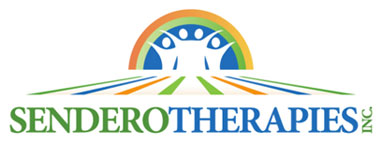OT Occupational Therapy
Occupational therapy is a service that helps people achieve independence in their daily life activities or “occupations”. In the pediatric setting, therapists use their expertise to help children prepare for and perform important learning and developmental activities. This typically includes muscle strengthening and range of motion of the hands and body, work on bilateral coordination (using two hands together), motor planning, visual perception skills, and visual motor skills. It also includes direct practice of the task, often with adaptations or modifications of the fine motor and self care tasks (cutting, writing, tying shoes) that are difficult for the individual child. Our OTs perform an evaluation and develop a treatment plan designed to ensure your child reaches their maximum level of independence.
What is an occupational therapist?
An occupational therapist is someone who specializes in working with individuals who are experiencing a condition that is limiting their ability to independently complete the tasks of every day living. In pediatrics, occupational therapists use their expertise to help children gain the functional skills they need for independence in play, learning, motor skill development, self care, and socialization in their home, school, and community environments.
How do I know if my child needs occupational therapy?
Your child might need occupational therapy if:
• They seem to have weak hands and/or get tired easily while doing fine motor tasks.
• They have difficulty with learning gross motor tasks such as riding a bike, skipping, or hopping.
• They are overly sensitive or emotional to sensory stimulation including touch, textures, tastes, sound, and movement.
• They are under responsive with decreased reactions to movement, touch, sound, or have unusually low emotional responses.
• They have trouble with writing including pushing too hard or not hard enough, not being able to develop and maintain a good grasp on the pencil, and having trouble with size and spacing of their letters.
• They have trouble learning how to dress them selves.
• They have difficulty with coordinating the muscles that control their eyes for good vision.
PT Physical Therapy
Physical therapy is a skilled intervention that focuses primarily, but not solely, on relieving pain, promoting healing, restoring function and movement, and facilitation and adaptation associated with injury and disability.
Pediatric therapy helps children learn to successfully and independently perform gross motor skills (running, jumping, hopping) and functional mobility skills (ambulation, stair climbing, wheelchair mobility, transfers). Physical therapy also helps young athletes in preventing injury by addressing any muscle imbalance or weakness as well as help them to return to play after injury. A variety of treatment interventions are used including: developmental activities, therapeutic exercise, balance and coordination activities, adaptive play activities, mobility training, safety and prevention programs, and activities to promote overall wellness.
What is a physical therapist?
A physical therapist is a licensed healthcare professional who utilizes various treatment interventions to maximize an individual’s movement and overall function. In pediatrics, a physical therapist helps children reach their full potential in the performance of gross motor and functional mobility skills. A therapist may work with a child who has a specific health impairment/disease, poor coordination, decreased muscle strength, muscle tone, or flexibility, delayed achievement of motor milestones, or following an injury.
How do I know if my child needs physical therapy?
Your child/infant may benefit from physical therapy if:
• They are not meeting the expected developmental milestones during the first year of life (ie. rolling, sitting, standing, walking).
• They have a strong preference for turning their head to one side or using one side of their body.
• They walk up on the balls of their feet or walk in an atypical/awkward manner.
• They have difficulty keeping up with their peers during play.
• They are not able to perform the same gross motor tasks (ie. hopping, jumping, skipping) as their peers.
• They frequently trip and fall when walking.
• They complain of pain when performing gross motor tasks.
• They were injured and are not able to perform at their prior level of function.
SLP SPEECH-LANGUAGE PATHOLOGY
Speech therapy is a service that helps people improve speech and language skills so they can communicate effectively with others. In the pediatric setting, therapists use their expertise to help children improve their expressive language (what they are able to say) and their receptive language (what they are able to understand) as well as articulation and social skills. Areas that are often addressed are language, voice, social communication, fluency, and articulation.
If a child has difficulties with social language, direct instruction may consist of teaching a child to begin an interaction with a friend, maintain a topic of conversation, or respond to a friend’s request to play. Our SLPs perform an evaluation to assess each child’s strengths and areas of need, and develop individualized therapy goals to best address the needs of your child so they can communicate and participate successfully with peers and adults.
What is a speech-language pathologist?
A speech-language pathologist, or speech therapist, is someone who specializes in working with individuals who have difficulties in the area of communication. Difficulties with communication can include a person who has trouble understanding others (receptive language), sharing thoughts, ideas, and feelings (expressive language), or producing speech sounds correctly. Therapists assess, diagnose, treat and help to prevent disorders related to speech, language, social skills, voice, swallowing and fluency
How do I know if my child needs Speech Therapy?
Your child might need speech therapy if:
-Your child has a difficult time expressing their thoughts, needs, or ideas.
-Your child has difficulties understanding others and following directions.
-People are often not able to understand what your child is saying.
-Your child’s voice often sounds hoarse, scratchy, rough, breathy, too high/low, or too soft/loud.
-Your child’s speech is dysfluent (stuttering). For example: repetitions B-b-b-b-but I want to go.
-Your child’s social skills seem different than their peers in terms of eye contact, play skills, turn taking, engaging with others, understanding vocal tone and facial expressions and knowing how to make friends.
As a school-based and community therapy placement company, Sendero Therapies, Inc. is devoted to providing support to encourage the professional growth of our therapists.
Learn more about the services we offer – contact us today. 330.998.2055

